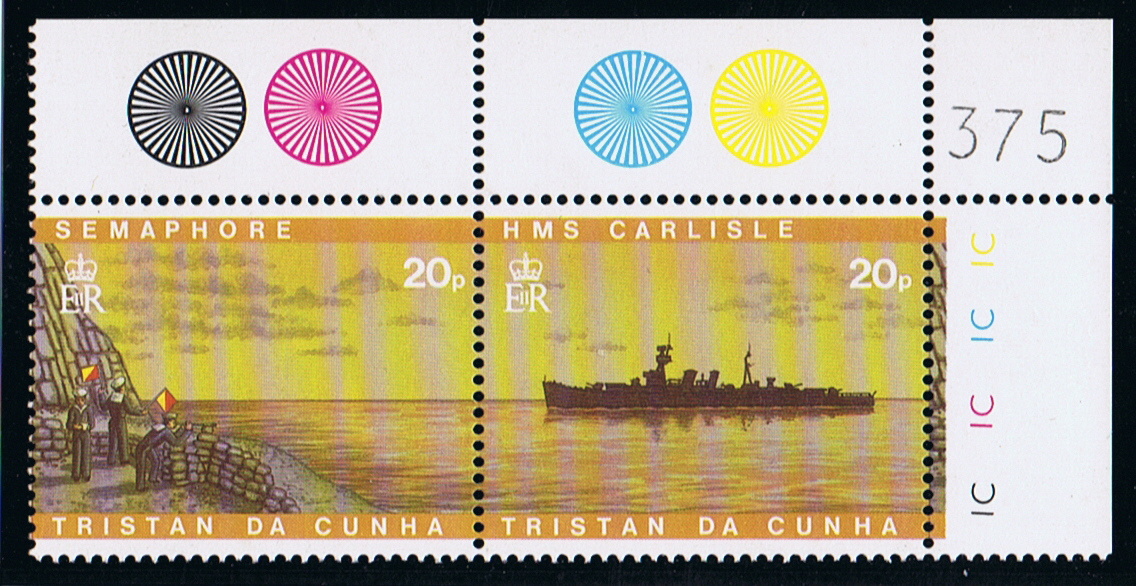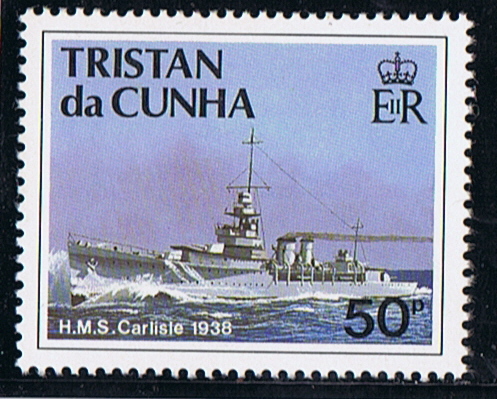

Built as a light cruiser under yard No. 580 by Fairfield Shipbuilding & Engineering Co., Govan, Scotland for the Royal Navy.
Her intended name was HMS CAWNPORE, but before launching renamed.
02 October 1917 laid down.
09 July 1918 launched as HMS CARLISLE one of the Cairo class.
Displacement 4.290 ton 6.200 full load, dim. 45.5 x 43.6 x 14ft. (draught) length bpp. 425ft.
Powered by B Curtis geared steam turbines, 40.930 hp., speed 28.4 knots, twin screws.
Bunker capacity fuel 300 tons normal, maximum 950 tons.
Armament. 5 – 6 inch, 2 – 3 inch AA, 8 – 21 inch torpedo tubes.
Crew 432.
11 November 1918 commissioned.
She was completed with a hanger positioned under her bridge, and she was to carry aircraft, however this proved unsatisfactory and the hanger was later removed.
1919 She joined the 5th Light Cruiser Squadron, based at Harwich.
March 1919 she sailed from Harwich in company with the squadron for the Far East, based on the China Station.
Between 1921 and 1929 she received a refit.
Then based at Africa Station with the 6th Cruiser Squadron.
February dry-docked at the Selborne dry dock at Simonstown, South Africa, prior to becoming a unit of the Home Fleet in the 2nd Cruiser Squadron Atlantic.
16 March 1937 the HMS NEPTUNE relieved her, and the CARLISLE returned to the U.K. After arrival put in reserve.
June 1939 she got a refit to an Anti Aircraft cruiser, 8 – 4 inch QF MK 16 guns and 1 quadruple 2pdr pom pom AA, replaced her 6-inch guns.
January 1940 again commissioned.
April 1940 during the Norwegian campaign, the CARLISLE was employed on escort duties of a troop convoy consisting of the 148th Infantry Brigade who went ashore at Andalsnes, with this the German position in Trondheim was threatened from the north and south (Operation Sickle)
Later in April the sloop HMS BITTERN which was mistaken for a cruiser, was badly damaged by German JU88s and had to be sunk by the CARLISLE.
August 1940 she served in the Red Sea and Gulf of Aden area when she assisted in the evacuation of British troops, civilians and the sick from Berber in British Somalia to Aden before being occupied by Italian troops.
March 1941 in the Mediterranean and used in escort duties as an AA vessel of the 15th cruiser squadron for convoys from Alexandria to Greece in Operation Lustre.
During April she assisted in the evacuation of troops from Greece to Crete and Egypt.
Early May involved in convoy duties, later that month on the 22nd, CARLISLE and HMS CALCUTTA reinforced Admiral King’s squadron to help with the destruction of a German invasion convoy to Crete. As soon as it was sighted the British ships opened fire. For a short time all went well a schooner and steamer were destroyed, and an escorting destroyer damaged by shelling. This destroyer laid a very effective smoke screen, which concealed what remained of the convoy, and the action was broken off.
The air attacks which Admiral King feared more than anything intensified and his squadron was under continual attack for over three hours. HMS CARLISLE received a direct hit which killed her Commanding Officer Capt. T.C.Hampton, R.N.
The British destroyer HMS KINGSTON immediately went alongside to give assistance, but the fire now raging and the still continuing air attacks prompted the cruiser’s Senior Officer to refuse the destroyer’s offer. CARLISLE then continued to engage the enemy with a furious barrage. By December, the old cruiser was back in service, performing convoy duties between Alexandria, Egypt and Malta. She was ordered to support the commissioned auxiliary supply ship HMS BRECONSHIRE (9.776 tons).
On 20 March 1942, CARLISLE was employed as convoy escort to the commissioned auxiliary supply ship HMS BRECONSHIRE loaded with 5.000 tons of precious cargo, the CLAN CAMBELL a Clan vessel, who was bomb damaged the previous convoy, the PAMPAS and the Norwegian ship TALABOT, the cargo was equally divided over the four ships, when one was lost the besieged island would receive anyhow some much needed stores. Getting this convoy through to Malta was afterwards referred to as the “Second Battle of Sirte”. The convoy was under command of Admiral Vian.
Of the total of 26.000 tons of stores carried by the four ships only 5.000 tons finally reached Malta. The price paid for delivering much-needed stores was indeed heavy. All four cargo ships were destroyed by air raids, the CLAN CAMPELL was lost 8 miles off Filfola Island on 23 March. BRECONSHIRE by No. 1 buoy, Malta on 26 March, and the other two during air raids on Malta the same day. More info is given on TALABOT on http://www.warsailors.com/singleships/talabot.html
In July 1943 she provided escort for the support force for the Allied landings in Sicily. During September-October during the German counter attack in the Aegean she made a sortie into the area south of Piraeus with the destroyers HMS PANTHER and HMS ROCKWOOD in order to intercept German convoy’s in the Scarpanto Strait.
It was here that on 9 October 1943 they were spotted by German JU87 dive-bombers which succeeded in sinking HMS PANTHER on 9 October with the loss of 3 officers and 33 ratings.
The same day the CARLISLE was hit by dive-bombers and disabled.
She was taken in tow to Alexandria by the ROCKWOOD.
After arrival by examination of the damage it was concluded that the CARLISLE was a constructive loss. She was never placed in service again.
She remained at Alexandria as a base ship for the remainder of the war.
1948 She was a hulk, and in 1949 broken up in situ.
Tristan da Cunha 1991 50p sg 512, scott 494 and 1997 20p sg 615, scott 598.
Source Jane’s Fighting Ships of World War II. Lloyds War Losses during the Second War. Ships of the Royal Navy by J J Colledge. Mostly copied from http://uboat.net/allies/warships/ship/1197.html
